What Cut of Meat to Use for Beef on a Stick?
I think flank steak works best.
If you can’t find that, use:
- Skirt steak
- Sirloin tip
Remove Beef From Packaging, Pat Dry, and Slice into Strips
Identify the grain direction, slice against it into 1/2″ thick strips.
You could also opt to slice on a bias (knife angled at 45 degrees) and the pieces will be wider, but as long as you slice against grain, it will be tender.

This Marinade is for ~1-2 lbs of Flank steak
- 1/4 cup Low sodium soy suace
- 2 tbsp rice vinegar
- 1/4 cup water
- 3 tbsp Gochujang
- 1 tbsp sesame oil
- 2 tbsp evaporated cane sugar (or any sugar)
- 1/2 tsp ground ginger
Marinate meat overnight.
While the meat marinates, soak bamboo skewers in water.
I know substitutions are popular BUT don’t skimp on:
- Gochujang
- Ginger
These are the main taste contributors.
The Next Day or Put the Beef on the Stick
When putting the beef on the stick, I’ve found that a cross-hatch pattern tends to keep them on better than sliding up the beef.
Grill Beef on a Stick @ ~350-400F
This should take ~8-10 minutes depending on your grill.
I’d strongly suggest flipping every 30 seconds or so as the marinade has some sugar that can and will burn easily.
Some charring is GREAT, lots of charring tastes very bitter.
Once done, allow to cool for 5 minutes and enjoy!
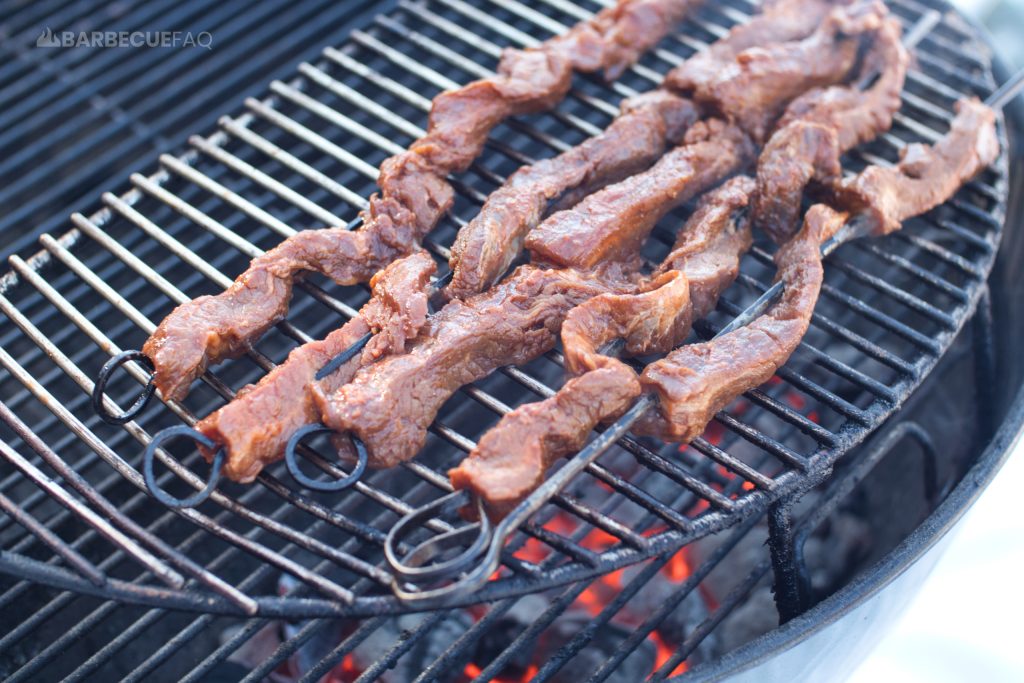
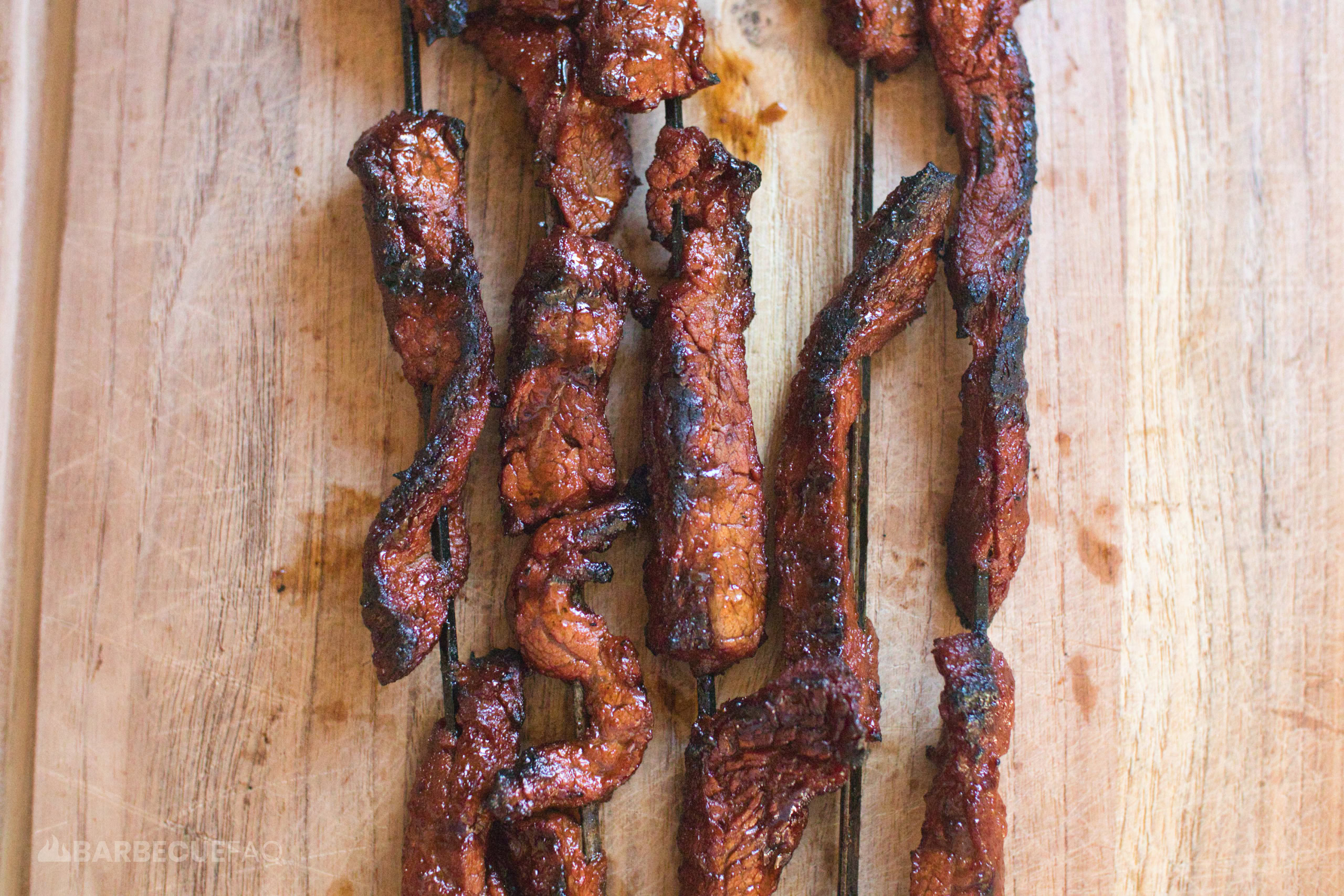
Korean-Style Beef Steak on a Stick
Ingredients
- 1-2 lbs Flank steak
Marinade
- 1/4 cup Low sodium soy sauce
- 2 tbsp Rice vinegar
- 1/4 cup water
- 3 tbsp Gochujang
- 1 tbsp sesame oil
- 1/2 tsp ground ginger
Instructions
- Remove flank steak from packaging and pat dry with paper towel.
- Cut flank steak against the grain, into 1/2" thick strips.
Create the Marinade
- Combine marinade ingredients in a large mixing bowl – ensure the sugar is dissolved and well combined.1/4 cup Low sodium soy sauce, 2 tbsp Rice vinegar, 1/4 cup water, 3 tbsp Gochujang, 1 tbsp sesame oil, 1/2 tsp ground ginger
Marinate the Beef Overnight
- Put sliced flank steak and marinade into a 1 gallon storage bag.
- Work the marinade into the beef by massaging it.
- Marinate the beef overnight.
Putting the Beef on the Stick
- Once marinated, carefully dump excess marinade into the trash and put the beef strips on a serving tray.
- Using skewers, follow a cross-hatch pattern to keep the beef on the stick.
Grilling the Beef on a Stick
- Get your grill to ~350-400F and then place the skewers on the grill.
- This should take ~8-10 minutes.
- Once done, rest for 5 minutes and enjoy!
Recipe re-tested and adjusted 1/13/2025:
Lowered the rice vinegar and sesame oil so Gochujang is more noticeable.
These days I also stick to dehydrated ingredients mostly but instead you could use 1-2 tbsp of freshly grated ginger.


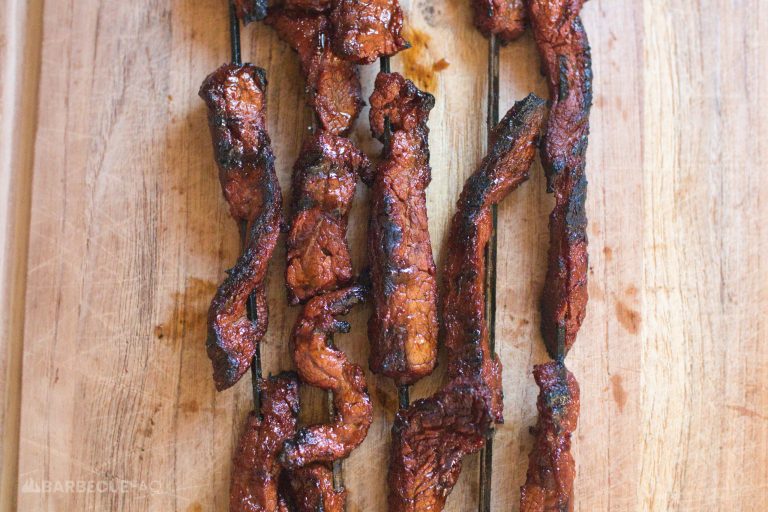
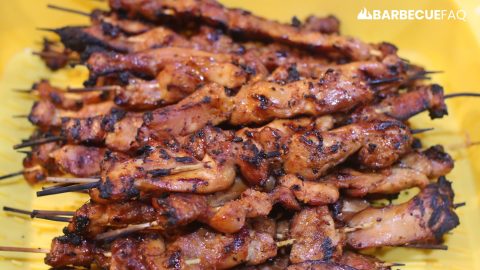
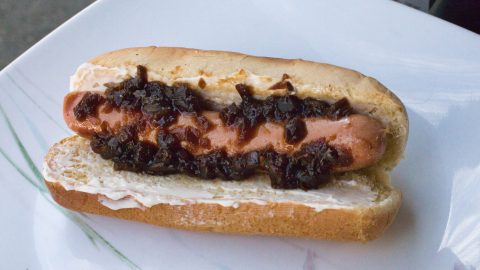
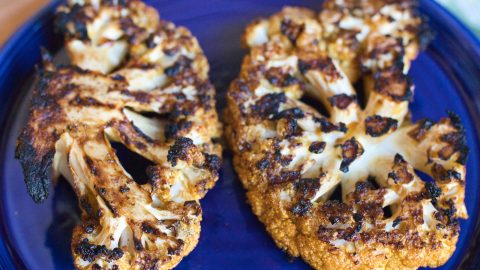
2 comments
Tom S.
Marinade was great and went well with skirt steak. Thanks for the simple instructions and recipe.
Dylan Clay
Happy to help Tom!